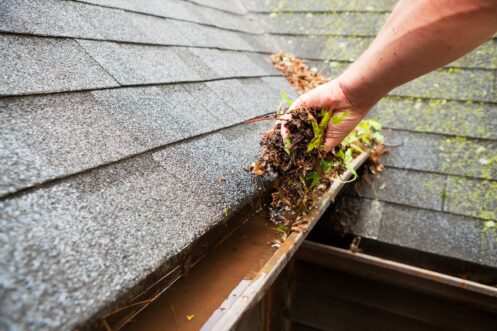
The Best Gutter Guards For Your Oklahoma Home
Gutter guards are coverings that lay over the top of gutters to prevent leaves, sticks, or other debris from getting into the gutter, while still allowing water to flow away from the roof. Different types of gutter guards work better in certain areas than others. Below you’ll find a guide explaining the different guards, their uses, and how to choose one.
What Are the Different Types of Gutter Guards?
Mesh or micro-mesh gutter guards are made up of plastic netting with holes in it. Micro mesh netting holes are smaller and finer in texture. Screen guards are similar to mesh guards, but have bigger holes and come in metal as well as plastic.
Foam guards are cut into a wedge shape, which fits into your gutters with the broad side up and the slanted side beneath. Foam guards filter both large and small particles. Brush guards are wire brushes that are installed into the bed of the gutters. These guards are effective at keeping out large debris and nesting animals.
Reverse curve guards work by diverting the flow of water around a block while the block keeps large and small particles out.
How to Choose a Gutter Guard
The type of guard you buy depends on a lot of factors, mainly maintenance, durability, and cost. Brush and foam guards are easier to remove for cleaning but must be cleaned and replaced more frequently than other guards.
Mesh and reverse curve guards are longer lasting and more durable. Both can handle most types of large debris, from pinecones to nesting animals.
Foam and brush guards are the least expensive, while reverse curve guards cost the most. Reverse curve and screen guards must be installed by a roofer because the bottom roof tiles must be lifted up to put the guard in place. These types of guards are sturdy but can compromise your roof structure by moving shingles.
Whichever guard you choose, [company_name] is here for all your roofing, gutter, and storm damage needs in the Tulsa area. Please contact us today for a quote!
